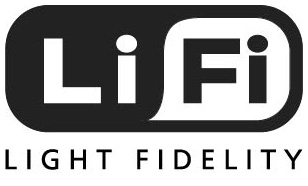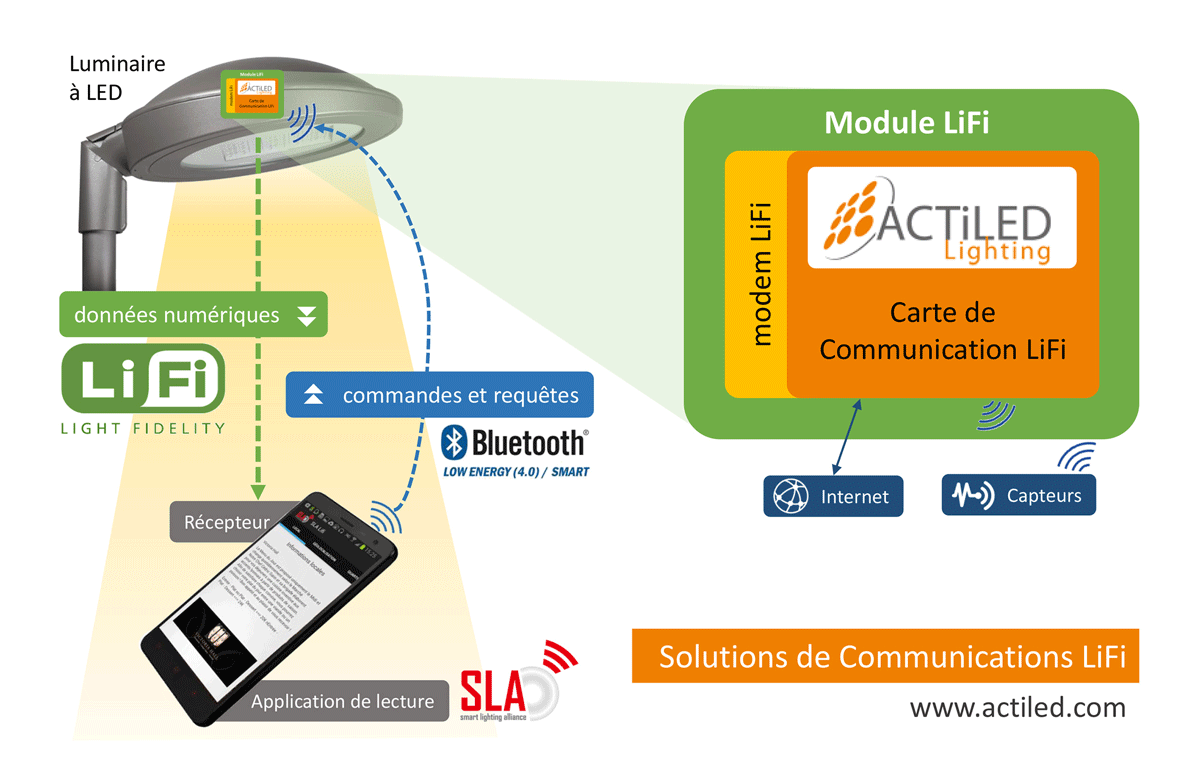LiFi Communications
 Li-Fi, i.e. Light Fidelity, is a technology enabling digital content to be broadcasted using a light source. By switching a LED on and off several thousand times a second, data can be transmitted in computing language. The frequencies are not visible to the naked human eye, too fast to have any physiological impact and allow all types of data to be transferred.
Li-Fi, i.e. Light Fidelity, is a technology enabling digital content to be broadcasted using a light source. By switching a LED on and off several thousand times a second, data can be transmitted in computing language. The frequencies are not visible to the naked human eye, too fast to have any physiological impact and allow all types of data to be transferred.
Using LiFi, a LED can remotely transmit geo-located multimedia content (video, sound, image, text) as well as GPS coordinates, that are particularly useful in places where airwaves do not traditionally pass (tunnels, car parks, etc.), or where they are restricted (hospial, planes, etc.). LiFi also offers a high development potential for applications such as urban infrastructures, energy smart grids or the management of retail, logistic or industrial sites.
ACTiLED is an active member of the SLA (Smart Lighting Alliance), a French organization that carries a number of projects in the field of LiFi.
Particularly involved in projects and experiments, ACTiLED works in partnership with ecosystem players teamed up by the SLA, and provides essential building blocks for the implementation of the LiFi: the communication system. Indeed enabling LiFi technology requires to channel information from different sources and manage appropriate interactions with users.
Mastering networking and embedded electronics technologies, both in hardware and software, allows us to provide working solutions.
The LiFi communications cards and modules developed by ACTiLED covers, upon requirements, the following functionalities:
- Compatibility with the Smart Lighting Alliance (SLA) software
- Real-time data conversion temps to OledComm and Luciom LiFi protocols
- Bi-directional communication management: LiFi/BLE (Bluetooth Low Energy)
- Ethernet and USB networks management
- Connection and interface with sensors and actuators
- Connection and interface with building technical supervision systems and energy metering devices
- HTTP, FTP, DHCP servers
- Lighting points power supply control


